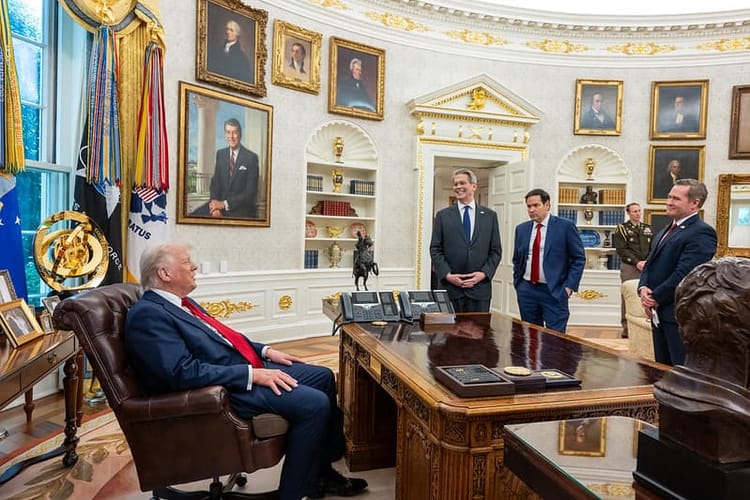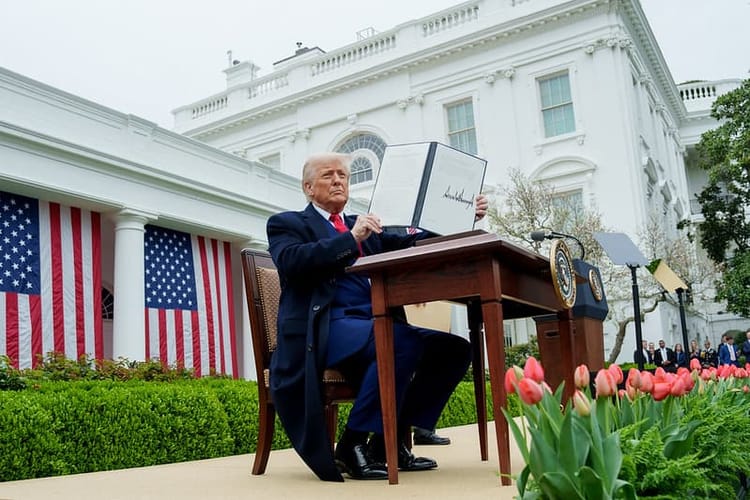New solar and tungsten tariffs | Taiwan escalation | New CATL plant

USTR announces additional duty increases on polysilicon, wafers, and tungsten
On Wednesday, December 11, the Office of the U.S. Trade Representative (USTR) announced additional tariffs as part of its review of the Section 301 duties on imports from China. Duties on unwrought tungsten and tungsten bars and rods will increase by 25%, while duties on polysilicon and wafers will increase by 50% on January 1, 2025. These duty increases follow from other increases announced earlier this year on products such as solar modules, battery storage systems, ship-to-shore cranes, and electric vehicles from China.
According to USTR, "increasing duties on these products will support current investments, stimulate greater domestic production, and spur additional investments in domestic capacity... while increasing tariffs may result in higher prices initially, the tariffs are necessary to allow domestic producers to compete against China’s massive excess capacity, defend recent investments, and encourage more domestic manufacturing." China produces over 80 percent of the world's supply of tungsten, and over 93 percent of the world's supply of polysilicon. According to the U.S. Geological Survey, there has been no commercial production of tungsten in the U.S. since 2015.
Our analysis: The new tariffs seek to pre-emptively wean U.S. supply chains off of critical inputs for which China dominates the global market. As geopolitical tensions ratchet up, China could restrict exports of these inputs to apply pressure or retaliate against U.S. policy changes. The tariffs also provide incentives for investment into new U.S. mining and processing projects.
Tungsten is a crucial input for defense-related manufacturing, including aerospace, missiles, and aircraft, as well as armor plating, armor-piercing munitions, and artillery. Given China's recent bans on exports of gallium, germanium and antimony to the U.S., a ban on tungsten exports is a likely retaliatory step in response to a reprise of the trade war during President-elect Trump's first term and could cause even greater harm. The new tariffs preempt those restrictions and pressure tungsten-dependent producers to immediately shift their supply chains away from China.
Domestic U.S. tungsten production ceased due to sharp declines in market prices that made importing from China more cost-effective than mining domestically. With no current production of tungsten, U.S. importers will need to seek out other sources of the input. In the short term, alternative sources include Bolivia, Germany and Spain. Down the road, the tariffs protect new tungsten mining investments, such as Guardian Metal's project in Nevada. The Department of Defense is also providing grants for standing up domestic tungsten mining and processing capabilities, with over $500 million in grants issued so far in 2024 for extractive projects and processing of critical metals and minerals such as tungsten, cobalt, and manganese.
Polysilicon has also been a sword of Damocles hanging over U.S. supply chains. With China controlling between 80-93% of the global market, polysilicon is a likely candidate for future Chinese retaliation against U.S. tariffs or other policies. Chinese production of polysilicon mostly occurs in Xinjiang due to availability of cheap electricity from coal-fired power plants, but this also means that Xinjiang-produced polysilicon is several times more carbon-intensive than polysilicon produced in other countries. Several Xinjiang polysilicon manufacturers have also been accused of forced labor practices using Uyghurs and other ethnic minorities, causing Chinese polysilicon production to shift to Ningxia and Inner Mongolia following the 2022 passage of the Uyghur Forced Labor Prevention Act (UFLPA).
Additional Reading: USTR Press Release, FR Notice, SCMP, SolarPowerWorld
China escalates tensions with expanded military exercises around Taiwan
Last Thursday marked the end of what has been called the largest Chinese military drills near Taiwan since 1996. The drills were not announced in advance, in a significant departure from past precedent, and included Chinese navy, army, air force and missile corps assets. Over the course of the exercises, China deployed a record 125 aircraft including warplanes, helicopters and drones, the aircraft carrier Liaoning, and approximately 90 vessels.
The catalyst for the exercises is believed to have been a speech by newly inaugurated Taiwanese President Lai Ching-te, who said that the People's Republic of China is not Taiwan's motherland and reiterated Taiwan's commitment to "resist annexation or encroachment." Lai's Democratic Progressive Party reject's the PRC's claim that Taiwan is part of mainland China. Speaking of the military exercises, China's Taiwan Affairs Office stated, "This is a resolute punishment for Lai Ching-te's continuous fabrication of 'Taiwan independence' nonsense." Taiwan's military had also been expecting drills after President Lai visited Hawaii and Guam during a recent overseas trip.
Our analysis: In November, Chinese President Xi told outgoing President Biden that interfering with Taiwan, democracy and human rights, China's communist system, and China's right to develop are China's "red lines," a message that was largely directed at incoming President-elect Trump. In other messaging over the years, Xi has highlighted Taiwan as the most sensitive of these red lines.
With this week's exercises, China is reiterating to both to the new Taiwanese president and to Trump that neither should encourage or facilitate greater freedom for Taiwan from China's grip. Xi sees the changing of the political guard in both Taiwan and the U.S. as an opportunity to plant a stake in the ground to help manage U.S. - China relations (and U.S. - Taiwan relations) during Trump's second term, while also keeping Taiwan in line and heading off U.S. interference.
Beijing's "red lines" are incompatible with U.S. interests, particularly China's insistence upon development at the expense of the rest of the world's manufacturing base. With respect to Taiwan, semiconductors are the new oil, and Taiwan is home to the most advanced semiconductor manufacturing in the world. Xi himself has said that high-tech manufacturing is the "main battlefield." His strategy is to forestall U.S. interference with carrots and sticks long enough for China to assume the dominant role in its relationship with the U.S., which includes China's eventual "reunification" (peacefully or otherwise) with Taiwan, and with it, control of crucial supply chains for the AI revolution.
Additional reading: AP, Reuters, Reuters, AP, France24
Stellantis and CATL announce $4.3 billion gigafactory joint venture in Spain
Stellantis, which owns the brands Chrysler, Fiat, Dodge, Jeep, Maserati, and Alfa Romeo, is teaming up with Chinese battery giant CATL to build what is expected to be one of Europe's largest electric vehicle (EV) battery plants. The announcement comes just two months after Europe's announcement of additional anti-subsidy tariffs of up to 35% on imports of Chinese EVs.
The project will be located in Zaragoza, Spain, and is expected to have an annual production capacity of 50GWh, producing lithium iron phosphate (LFP) batteries primarily for smaller, more affordable EVs. The first phase of the project is expected to come online in 2026. CATL already operates plants in Germany and Hungary that also make batteries for European EVs. CATL makes batteries for a broad range of manufacturers including Tesla and BMW.
Our analysis: Following the U.S. and Canada's announcements of 100% tariffs on Chinese EVs, Europe's EV market still remains attractive by comparison. CATL, Gotion, BYD and other Chinese battery manufacturers have responded to these tariffs by investing in local manufacturing. In Europe's case, this was likely the desired effect, and by partnering with Stellantis, CATL insulates itself from hawkish MPs and anti-China political pressure. The European vote on EV tariffs was itself highly contentious, with 10 countries, in favor, 5 against, and 12 abstaining. In general, Europe has attempted to remain politically aligned with the United States politically while maintaining reliance on Chinese supply chains and benefitting from Chinese investment. Germany voted "no" on the tariffs based in part on fears that China would retaliate against German auto exports and investments in China.
On the other hand, the U.S. and Canada are more likely to view China's dominance of global EV and battery industries as a national security risk. After China announced its EV subsidy program, it issued a "white list" of battery companies from which all foreign firms were excluded. In order to be eligible for state subsidies, EV manufacturers were required use batteries from a white-listed Chinese supplier. While the U.S. may not trumpet discriminatory policies like China's, it will increasingly differentiate between battery manufacturing investments from domestic and friendly foreign countries, and those from Chinese companies. This can be seen in the furor over Chinese firm Gotion's plans to build a $2.4bn EV battery plant in Green Township, Michigan. While local and state politicians have celebrated the jobs and economic development promised by the project and have backed it with over $700m in subsidies, numerous Congressional representatives and senators have argued that Gotion's alleged ties to forced labor in Xinjiang should disqualify it from making U.S. investments. They also argue the allowing the plant to be built will further embed China into U.S. supply chains and critical infrastructure, and it will serve as a backdoor for Chinese Communist Party influence in the United States.
Additional reading: Reuters, Stellantis Press Release, CATL Press Release, SCMP





